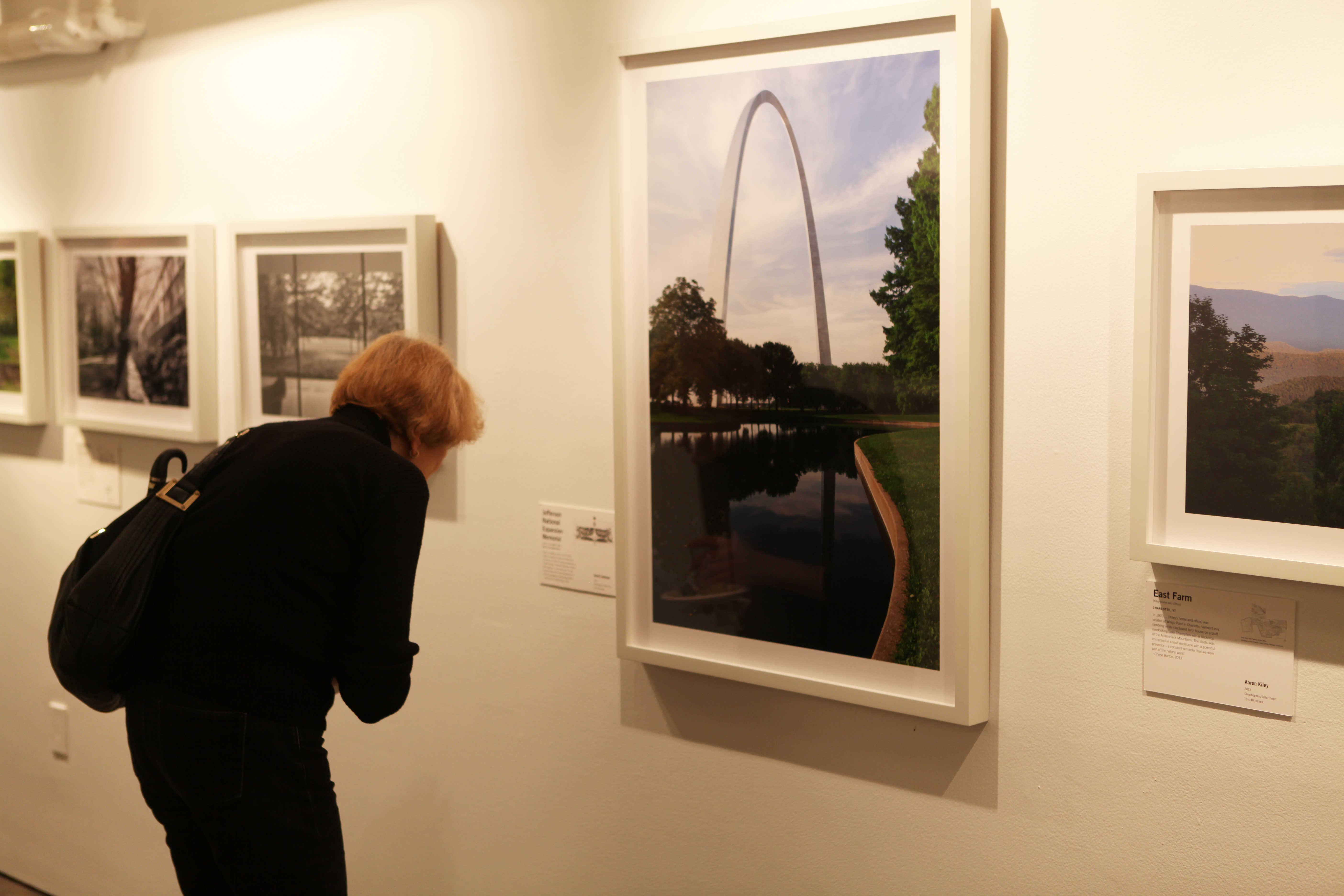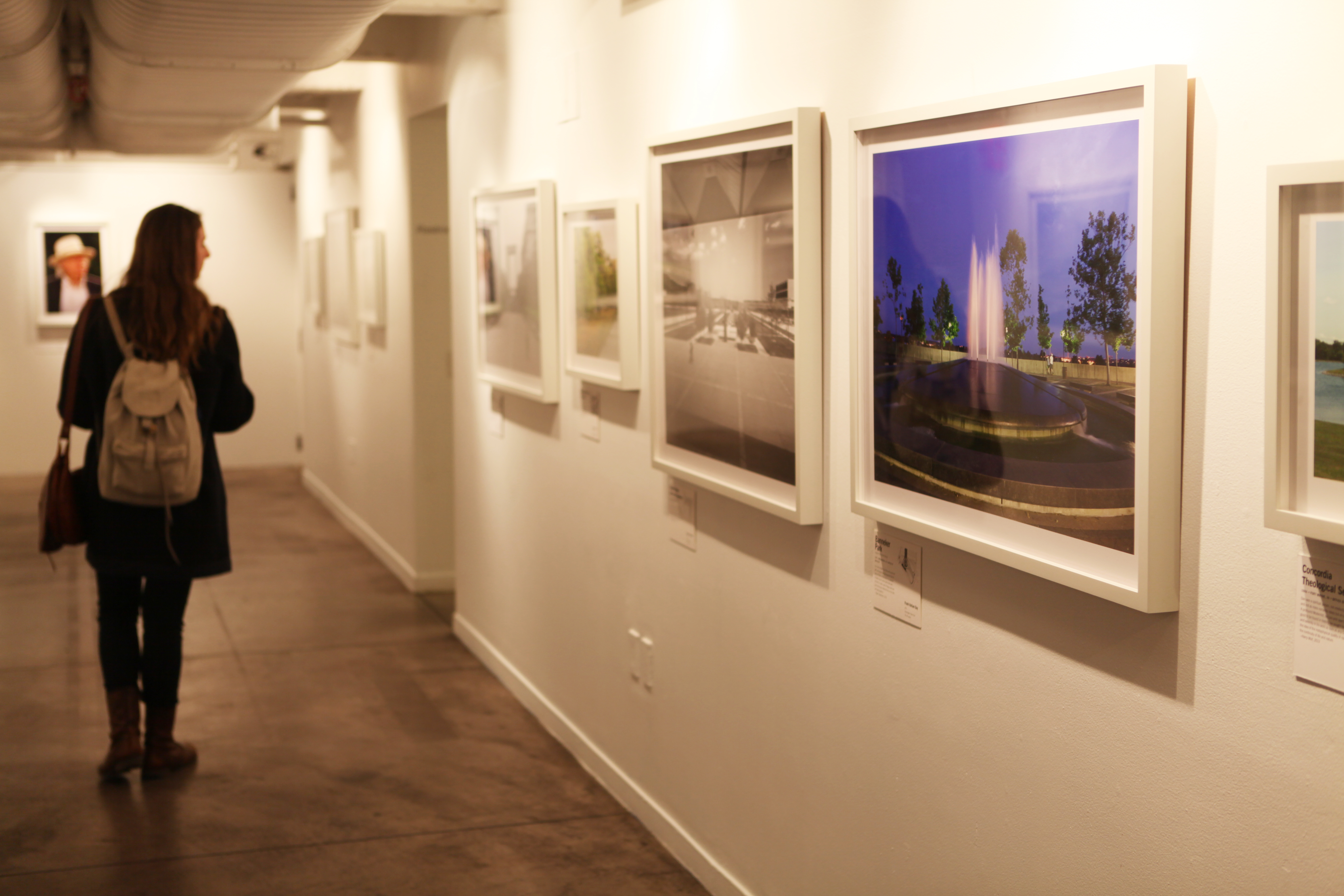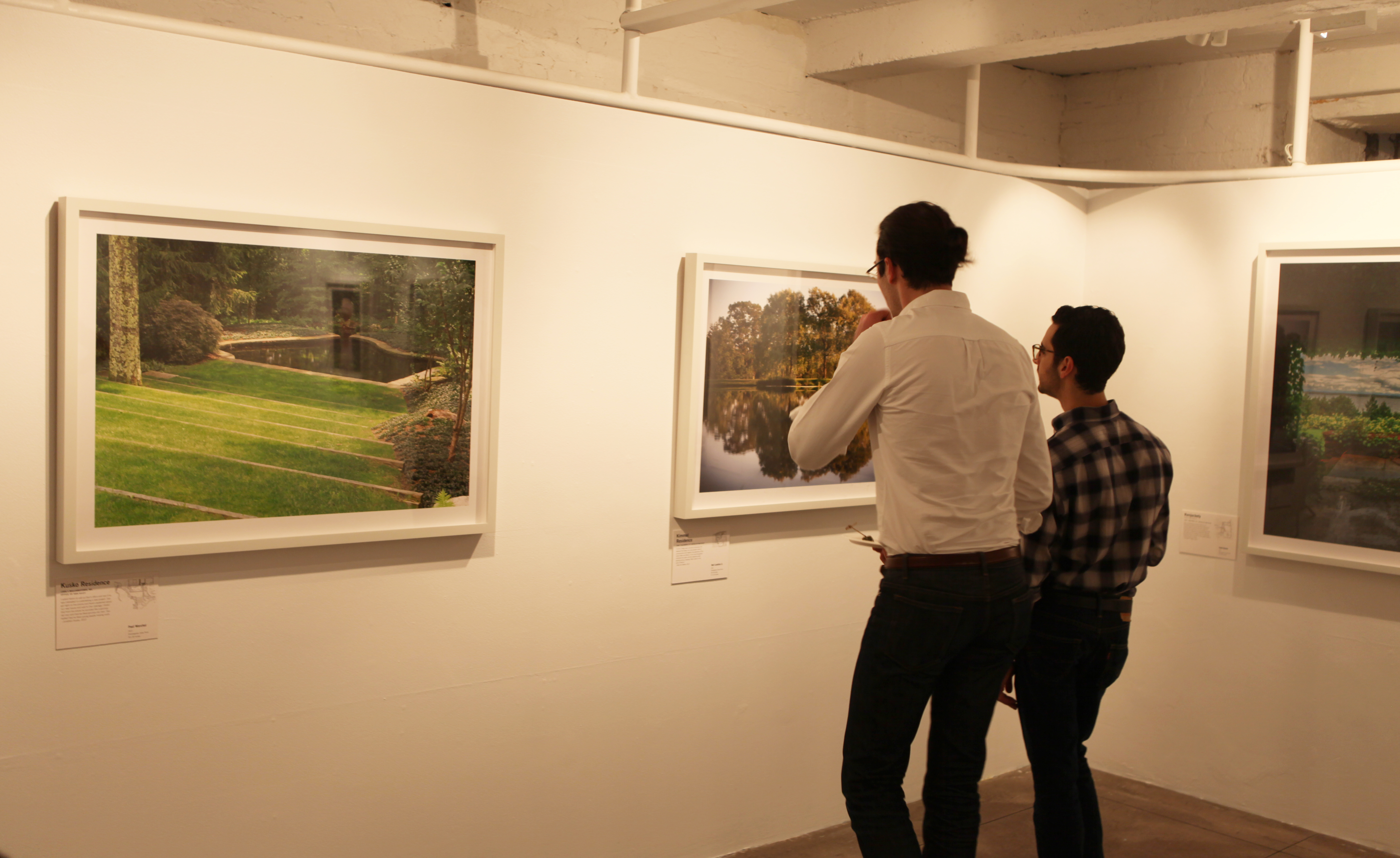by jchristie
Among Dan Kiley’s designs are some of the most celebrated landscapes of the 20th century, yet many have fallen into neglect. Following his 100th birthday, The Cultural Landscape Foundation commissioned –24 artists to photograph –27 of Kiley’s more than 1,000 designs to fortify his legacy, assembling “The Landscape Architecture Legacy of Dan Kiley” exhibition. Opening in the Fall of 2013, the exhibition has traveled to five states across the country and is now on view at the Center for Architecture, in time for April, Landscape Architecture Month. The exhibition presents an introduction to Kiley’s oeuvre, showcasing his imaginative approaches to a variety of contexts, a diverse and thoughtful use of plants, and the geometric clarity of his designs. From private homes to public parks, the exhibition demonstrates how Kiley’s Modernist designs create a balance of order, lush nature, and open space, inspiring calm and awe.
In viewing Kiley’s work, patterns quickly emerge. Following the tradition of Le Nôtre, Kiley’s bold use of geometric shapes brings order to vast expanses. Selecting a few plant varieties, he created simple color palettes, using repetition for allées and visual patterns, enclosed spaces, and framed views. Grade changes become opportunities for rectangular patterns, as materialized in the Kusko Residence in Williamstown, MA. Open expanses and pools, sometimes containing patterns themselves, often become the heart of his landscapes – a design feature exemplified by the Miller House in Columbus, IN, and the United States Air Force Academy in Colorado Springs – while trees form borders, creating canopy-like shelters. Naming this design technique “an in-between form of landscape experience,” Elizabeth Meyer, FASLA, writes for the exhibition: “Kiley considered his primary medium as a landscape architect to be the three-dimensional spaces created by plants that were neither as bounded as a built room nor as amorphous as the ‘open plan’ in Modernist architecture.” The collected photographs exhibit Kiley’s manipulation of a minimal number of plants and man-made materials to play with the borderlands of walls, pathways, rooms, and open space.
The exhibition also strongly demonstrates Kiley’s sensitivity to architecture. Working closely with architects including Eero Saarinen, Kevin Roche, and Santiago Calatrava, Kiley responded to the shapes, patterns, and contexts of his surroundings, unmistakable in designs such as Kiley Garden in Tampa, FL, where he worked closely with the architect Harry Wolf to create a checkerboard pattern that reflects the windows of what was once NationsBank’s corporate headquarters, as well as the Jefferson National Expansion Memorial, where Kiley manipulated streams of water to reflect the curvature of Saarinen’s arch, and the Air Force Academy, where long grass and cement paths evoke the runway.
For the rare opportunity to see many of Kiley’s designs in one place, visit the Center for Architecture before 06.20.15. While you are in Manhattan, experience Kiley’s landscapes in person at the Ford Foundation and Rockefeller University. The exhibition will travel next to Dallas and Baton Rouge; click here for more information.





